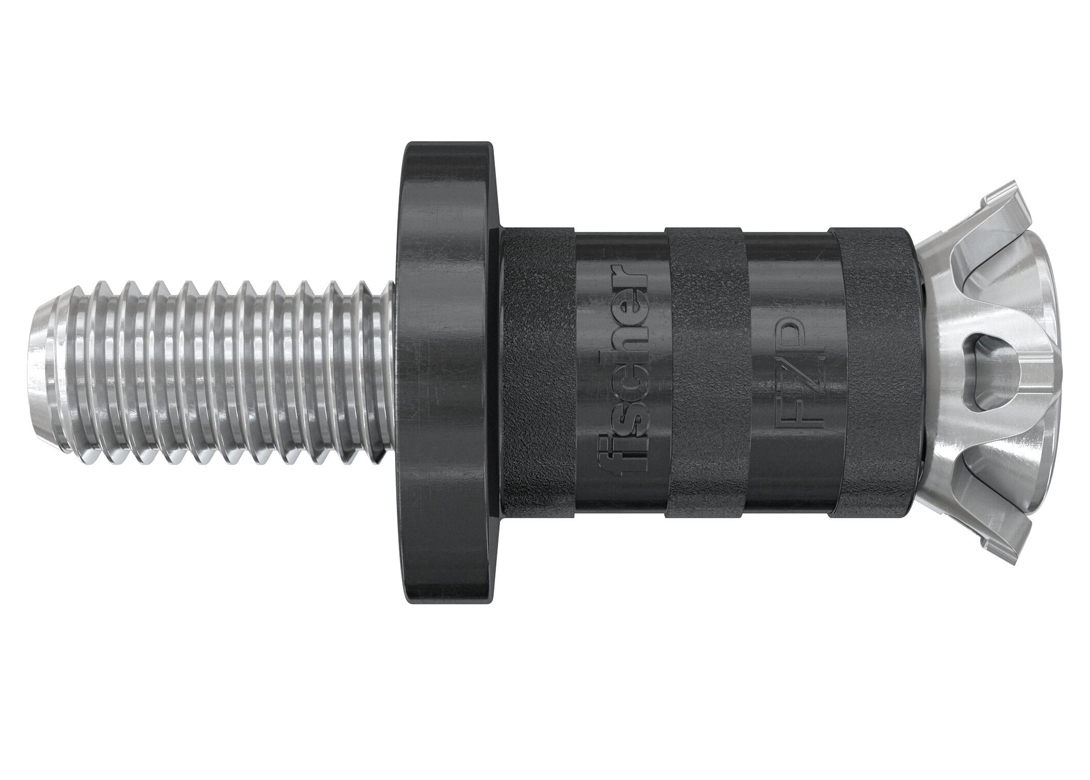
The city of Göttingen is currently carrying out extensive renovation work on its town hall. The existing, mortared or mechanically fastened ceramic tiles on the building are carefully dismantled and reused in the planned rear ventilated curtain wall. Thanks to the fischer complete system for VHF, the building shell can be fastened efficiently and securely and preserved for the future.
The substructure solution suitable for the project, together with the appropriate undercut anchors and long-shaft dowels, are supplied by fischer from a single source. The most striking feature of the Stadthalle Göttingen and an architectural unicum is the colourful tiled facade. The ceramic plates measure 50 x 50cm and have two different geometric reliefs with a circle and triangle as well as different coloured glazes in dark blue, blue, red and violet. White is added to the base and attic areas.
The supporting base of the original building shell consists of reinforced concrete and undefined masonry. The ceramic plates, which were attached with strips of mortar and brass bands, were completely dismantled manually for the facade renovation and were cleaned in order to store them for recycling. The concrete on the exposed facade was renovated in order to restore the partially insufficient concrete cover of the reinforcement. The facade was designed as a VHF together with a new thermal insulation in accordance with the energy requirements.
Since the old and new tiles are not made of a building material that is regulated for the rear-ventilated facade, a ZiE was required. The attachment was made with Zykon plate anchors FZP II in the version 11x21 M6/SO/9 carbon. Although the tiles are small, four fasteners per panel were used to prevent the facade from rattling in the wind. The assessment of the façade construction was carried out by the expert and appraiser Prof. Dr. Alfred Stone. After the ZiE was obtained, the facade elements were attached with the fischer/BWM aluminium substructure. "The system enables secure and at the same time concealed attachment," says Jochen Burbach, head of fischer Fassadensysteme Germany. “In this way, the original building image is preserved for generations to come. In detail, the spacer substructure was executed vertically with the ATK 100 ZeLa. The use of the thermally optimized ZeLa holder with a stainless steel sword made it possible to comply with the required heat protection requirements with a small structure at the same time.”
The horizontal systems, which consist of the ATK 103 P20 for the concealed bracket attachment together with P20 horizontal profiles, were attached to this basic construction. fischer long-shaft dowels and injection anchors anchor the wall brackets of the substructure in the supporting structure. The visible elements with the preserved and new tiles were securely and concealed attached to the substructure with the fischer undercut anchors.
The result is a characteristic facade that is future-oriented in terms of building ecology with the charm of the 1960s and new stability.

Having spent a decade in the fastener industry experiencing every facet – from steel mills, fastener manufacturers, wholesalers, distributors, as well as machinery builders and plating + coating companies, Claire has developed an in-depth knowledge of all things fasteners.
Alongside visiting numerous companies, exhibitions and conferences around the world, Claire has also interviewed high profile figures – focusing on key topics impacting the sector and making sure readers stay up to date with the latest developments within the industry.






